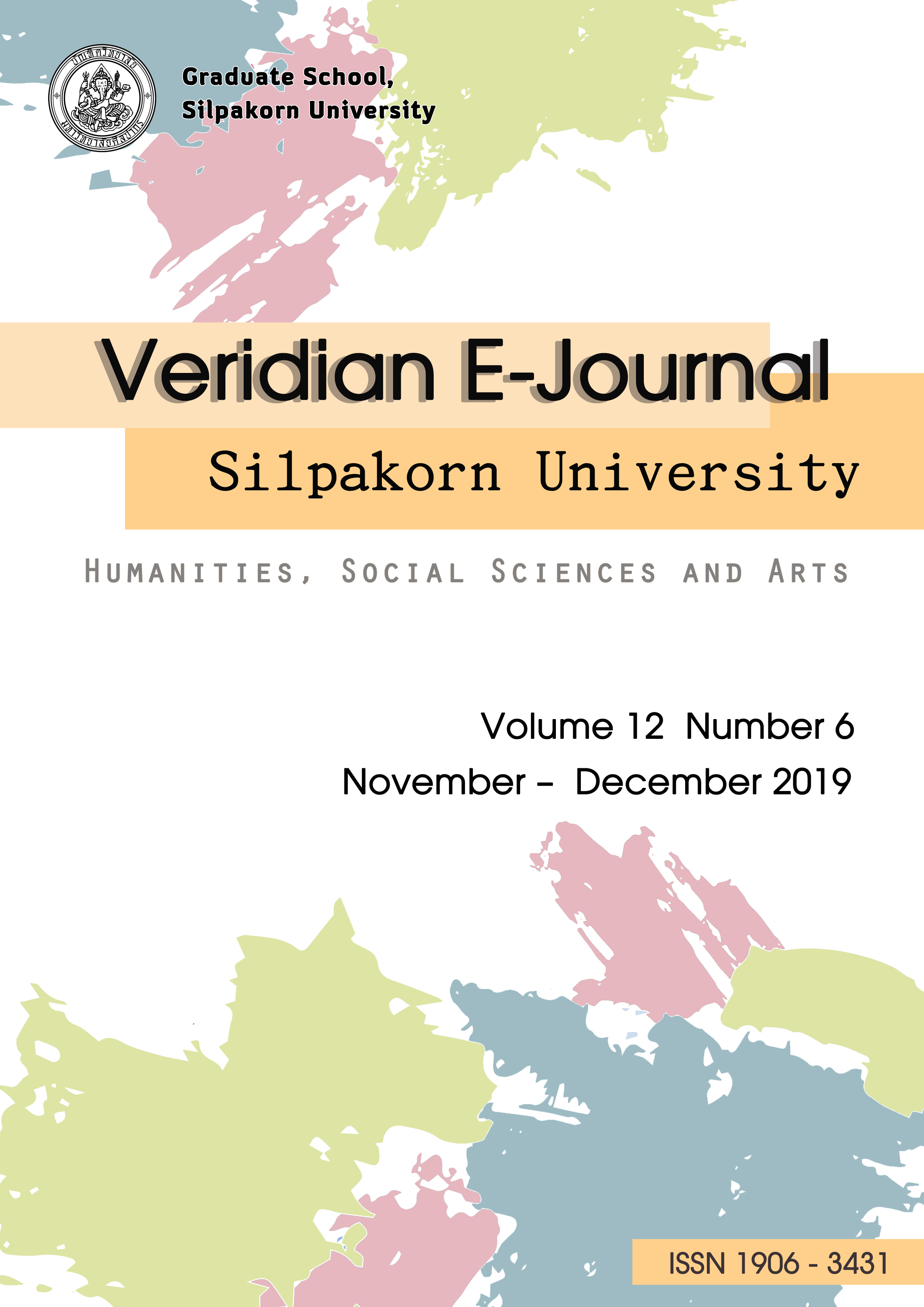พื้นที่ในผลงานของ แอนเซลม์ คีเฟอร์ ริชาร์ด ลองและโนะบุโอะ เสะคิเนะ (Spaces in artworks of Anselm Kiefer, Richard Long and Nobuo Sekine)
Main Article Content
Abstract
บทความนี้มุ่งศึกษาประเด็นการสร้างสรรค์เกี่ยวกับพื้นที่ในผลงานของศิลปิน 3 คน ได้แก่ แอนเซลม์ คีเฟอร์ ในผลงานชื่อ เจอริโค (ค.ศ. 2006) คนที่สอง คือ ริชาร์ด ลอง ในผลงานชื่อ เส้นที่เกิดจากการเดิน (ค.ศ. 1967) และคนสุดท้าย โนะบุโอะ เสะคิเนะ ในผลงานชื่อ มาเธอร์ เอิร์ธ (ค.ศ. 1968) โดยมุ่งเน้นประเด็นการใช้พื้นที่ในการสร้างสรรค์ พื้นที่ในผลงานของแต่ละคนมีลักษณะทางกายภาพที่แตกต่างกันออกไป ทั้งที่เป็นสิ่งแวดล้อมทางธรรมชาติ และสิ่งที่มนุษย์สร้างขึ้นที่เชื่อมโยงเอาความสัมพันธ์ระหว่างประสบการณ์ พื้นที่ และเวลาไว้ด้วยกัน
วิธีการศึกษาได้อาศัยแนวคิดเกี่ยวกับพื้นที่ของนักปรัชญาหลัก 3 คน คือ มาร์ติน ไฮเด็กเกอร์ แอน สเตนรอส และฟิลลิปป์ เดสโคล่า เพื่อทำการวิเคราะห์ ผลการศึกษาสรุปได้ดังนี้
- พื้นที่ทางความคิดที่เชื่อมโยงกับประสบการณ์ สามารถสร้างความสัมพันธ์ระหว่างสภาวะภายในกับวัตถุที่เป็นรูปภายนอก
- พื้นที่ทางธรรมชาติ สามารถเป็นวัสดุในการสร้างสรรค์ศิลปะได้ ซึ่งเชื่อมโยงพื้นที่เล็กๆ สู่การเป็นตัวแทนพื้นที่โลกได้
- ร่างกายสามารถเป็นเครื่องมือในการสร้างสรรค์ศิลปะได้ และเชื่อมโยงธรรมชาติกับมนุษย์เข้าด้วยกัน
- พื้นที่มีความสัมพันธ์ระหว่างวัตถุและพื้นที่ว่าง (อากาศ) ปรากฏเป็นพื้นที่เชิงบวกกับพื้นที่เชิงลบ
This article focuses on the issues about space creations in 3 artworks including Anselm Kiefer’s “Jericho” (2006), Richard Long’s “A Line Made by Walking” (1967) and Nobuo Sekine’s “Phase : Mother” (1968). Space in each artwork has the distinctive physical appearance in both natural surroundings and man-made things which are the relationships between experiences, space and time.
The concepts of space from Martin Heidegger, Anne Stenros and Phillipe Descola were the methods used to analyse the artworks and the results of studies are concluded as follows:
- Sentimental space, which is related to experiences, can make up the association between condition inside the material and the appearance outside.
- Natural surroundings can be the materials in art creation and the small pieces of land are able to represent the space in global scale as well.
- Body can be the tool of art creation thus nature and human body could be connected together.
- The relationship of space and object could be interpreted as positive and negative space.
